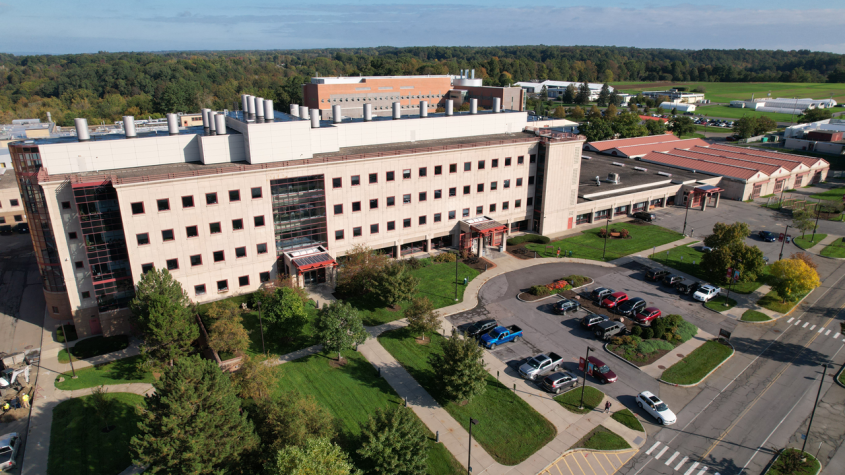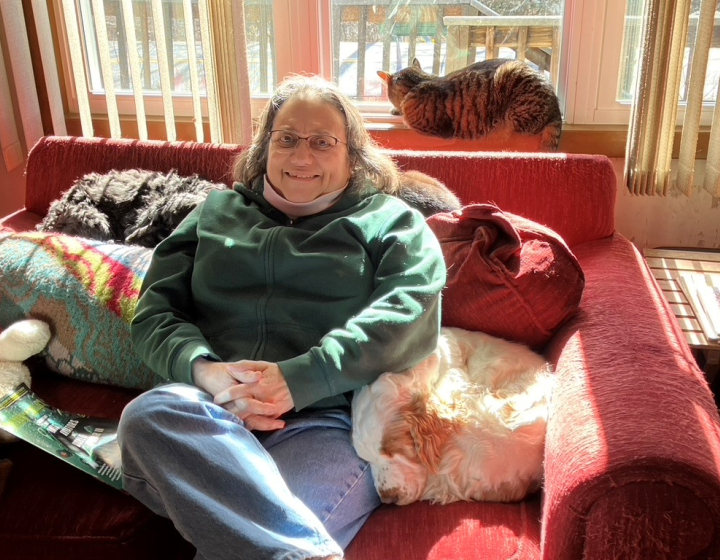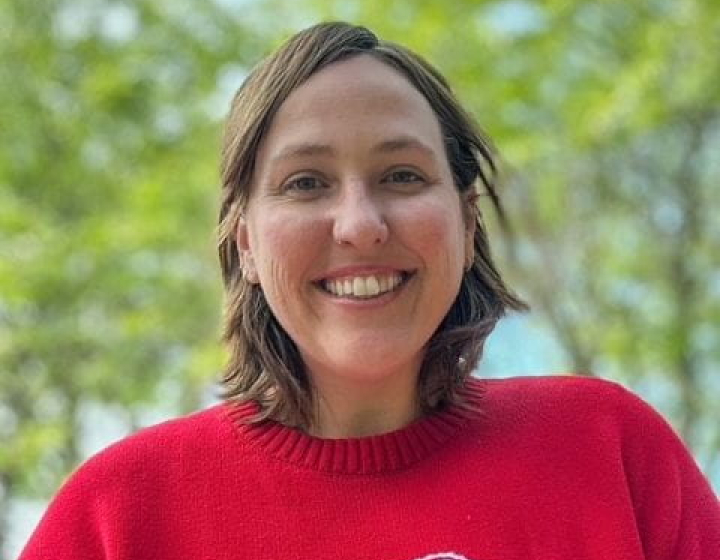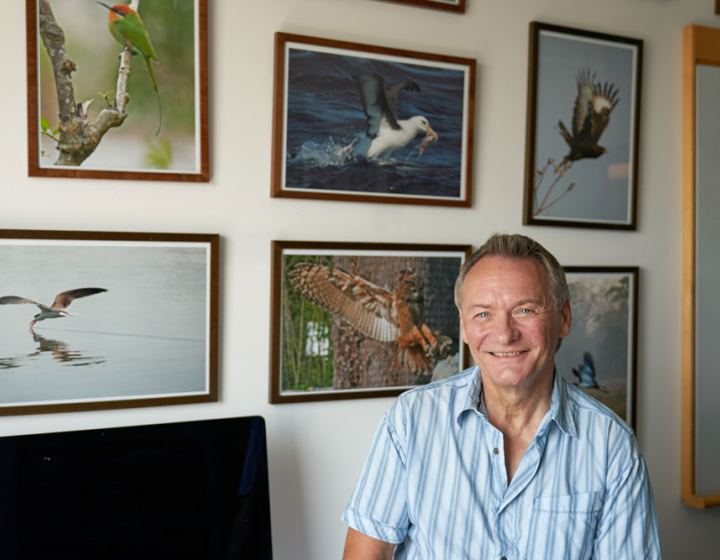Minimally invasive surgery helps husky bounce back from tumor
When Jim McLaren discovered that his dog, Kaija, had a tumor in her chest, he faced a quandary. All of the veterinarians he contacted recommended cutting through the breastbone to open to the chest so they could remove the cancerous mass.
McLaren did everything with Kaija, a 12-year-old Shepherd Husky mix, including taking her on vacations from Maine to Florida. He just couldn’t fathom putting her through such a difficult operation.
“I didn’t think she would survive the surgery or the recovery from it,” he said. “To cut her breastbone down the middle and just split her wide open seemed too much for her to handle at that age.”
While searching for other options online, McLaren found a paper written by Dr. Nicole Buote, associate professor of small animal surgery at the Cornell University College of Veterinary Medicine. The 2008 paper discussed using minimally invasive surgery to remove thymomas, tumors found within the chest cavity.
In early January, he emailed Buote, and three weeks later, he drove Kaija from their home on Long Island to the Cornell University Hospital for Animals (CUHA) for a consultation and ultimately a CT scan.
The next day, Buote performed the two-hour surgery to remove the thymoma. Instead of opening Kaija’s breastbone, Buote made incisions for three ports in Kaija’s chest: one where her ribcage met her belly to insert a small camera, and two in the front on each side near her armpits, where she dissected the tumor.
One of the ports in the front was enlarged so Buote could insert a sterile bag and place the tumor inside it to prevent cancer cells from spreading internally. She also cut the blood supply to the tumor by sealing the blood vessels.
Buote, who has performed this type of surgery multiple times, is the only veterinarian at Cornell with a certified specialty in small animal minimally invasive surgery from the American College of Veterinary Surgeons. She notes that finding a surgeon in New York state who has experience using this approach for removing thymomas can be difficult.
“There aren’t a lot of people who are doing advanced minimally invasive surgeries, particularly for thymomas,” she said.
The advantage of minimally invasive surgery is that both the procedure and the recovery are quicker than if the dog’s breastbone were cut open in what is called a median sternotomy. “That’s a perfectly acceptable surgery,” Buote said. “It’s just that it doesn’t have to happen. If you can take the tumor out with small incisions, it’s better for the patient.”
Kaija’s age was never a factor in determining whether to perform the surgery, Buote said. “I don’t look at age as a disease. The only reason not to take a dog to surgery is if she’s got other diseases, such as really bad heart disease or really bad kidney disease, and she can’t be safely anesthetized. There are dogs that can’t go under anesthesia, but those are few and far between.”
Following the surgery, Kaija was kept at CUHA for three days and will get a chest x-ray every three to six months to make sure that the tumor hasn’t grown back. After refraining from vigorous exercise for three weeks, Kaija was back to her normal routine.
“I couldn’t have asked for a better outcome, from how fast Dr. Buote helped us to the quality of her work,” McLaren said. “She truly cares for her patients and went above and beyond expectations. It’s obvious she loves her job.”
Buote advises dog owners whose pets are diagnosed with cancer or other diseases to explore options for treatment. McLaren is the perfect example of an owner who researched the types of surgery available for his dog, she said. “I am glad that minimally invasive surgery was an option for Kaija and that we saw such a rewarding outcome.”
Written by Sherrie Negrea






